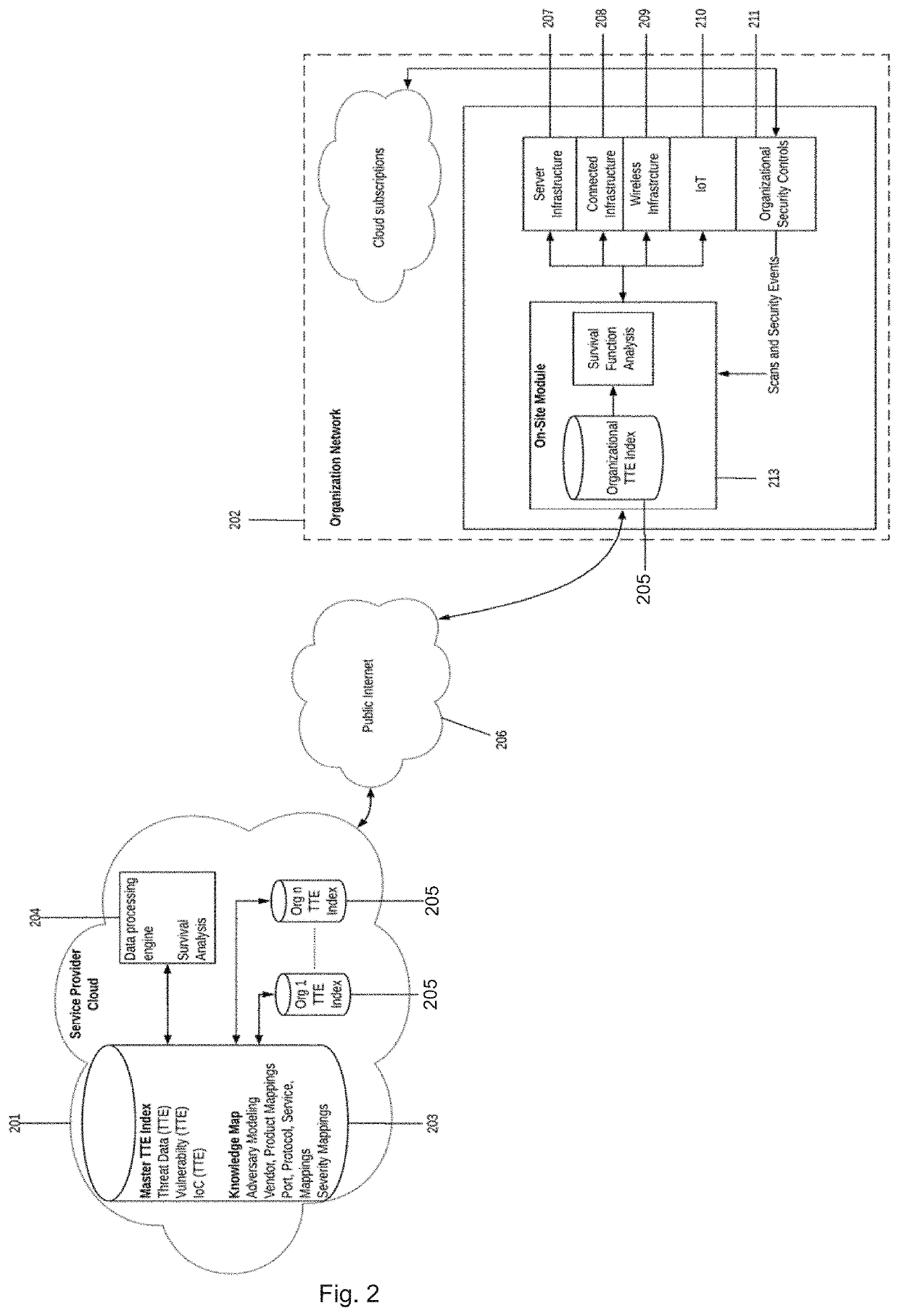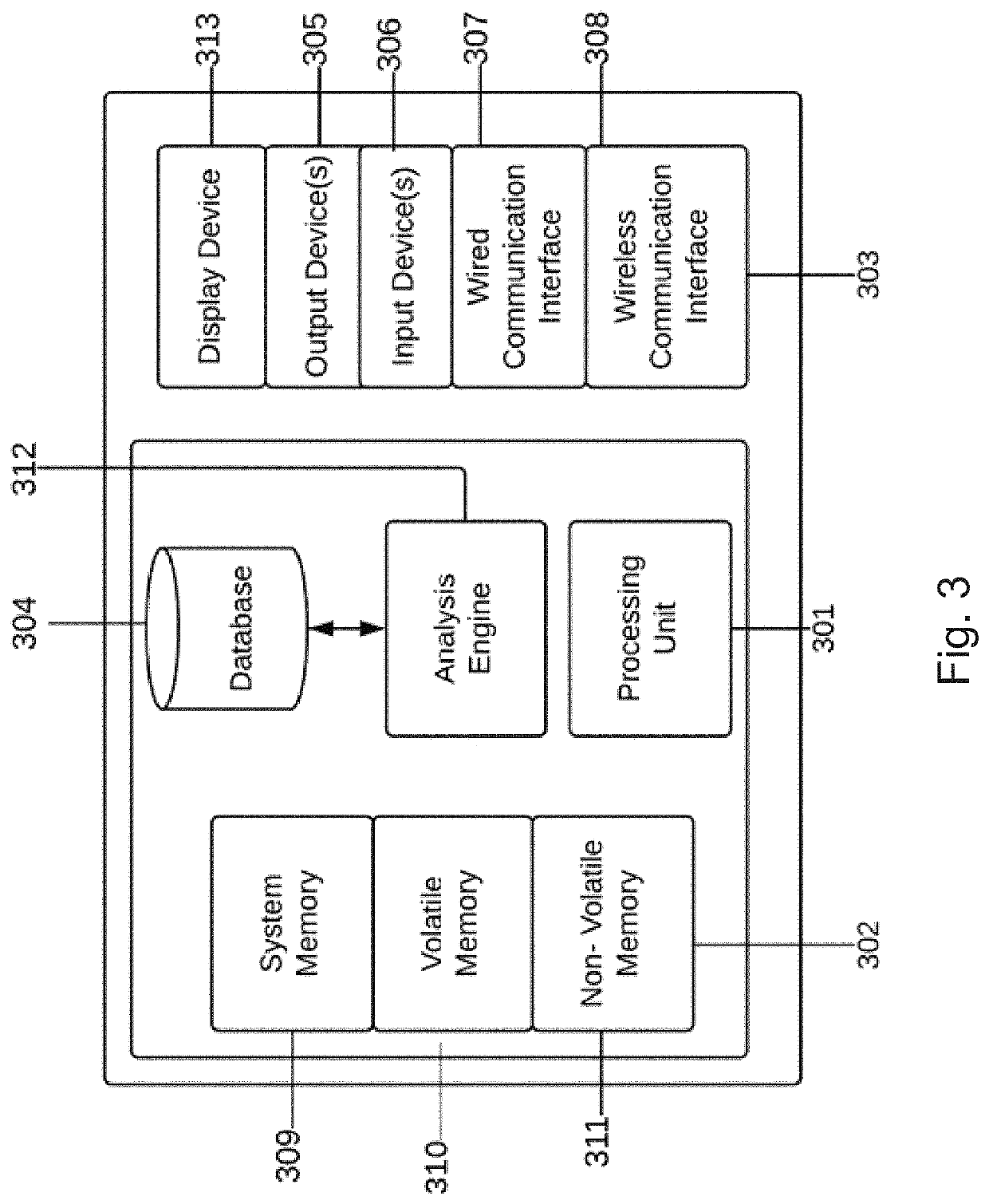Complex Application Attack Quantification, Testing, Detection and Prevention
a complex application and attack technology, applied in the field of cyber-attack quantification, testing, detection and prevention of computer software, can solve the problems of poor operational security procedures, difficult organization to keep track, and failure to protect critical assets from cyber-attacks
- Summary
- Abstract
- Description
- Claims
- Application Information
AI Technical Summary
Benefits of technology
Problems solved by technology
Method used
Image
Examples
Embodiment Construction
[0040]An embodiment of the present invention relates to a method for quantifying the likelihood of cyber-attack on target assets including creating a master time-to-event (“TTE”) index, the master TTE index including a plurality of security entities that are each associated with a TTE value; mapping the security entities and security events to form an organizational TTE index having TTE values; synchronizing the organizational TTE index with the master TTE index for at least some of the security entities; calculating an attack likelihood by applying a survivor function or a cox regression analysis to the organizational TTE index; and quantifying risk by inputting the attack likelihood into a cyber risk quantification framework.
[0041]In one embodiment the security events can be inferred from an organization's security controls. The method can also include synchronizing the organizational TTE index with the Master TTE index for the security entities can include using a feedback loop w...
PUM
 Login to View More
Login to View More Abstract
Description
Claims
Application Information
 Login to View More
Login to View More - R&D
- Intellectual Property
- Life Sciences
- Materials
- Tech Scout
- Unparalleled Data Quality
- Higher Quality Content
- 60% Fewer Hallucinations
Browse by: Latest US Patents, China's latest patents, Technical Efficacy Thesaurus, Application Domain, Technology Topic, Popular Technical Reports.
© 2025 PatSnap. All rights reserved.Legal|Privacy policy|Modern Slavery Act Transparency Statement|Sitemap|About US| Contact US: help@patsnap.com



